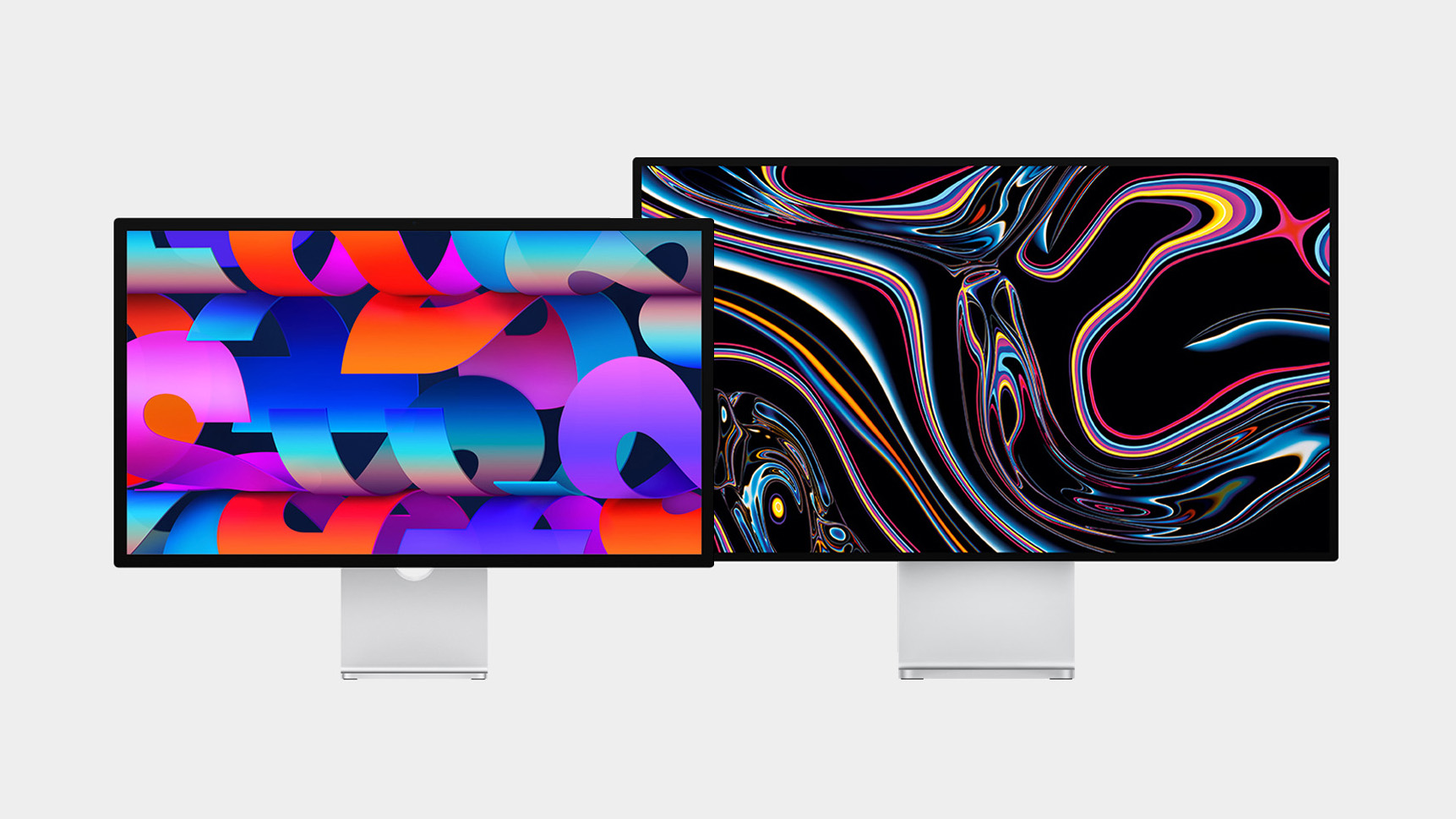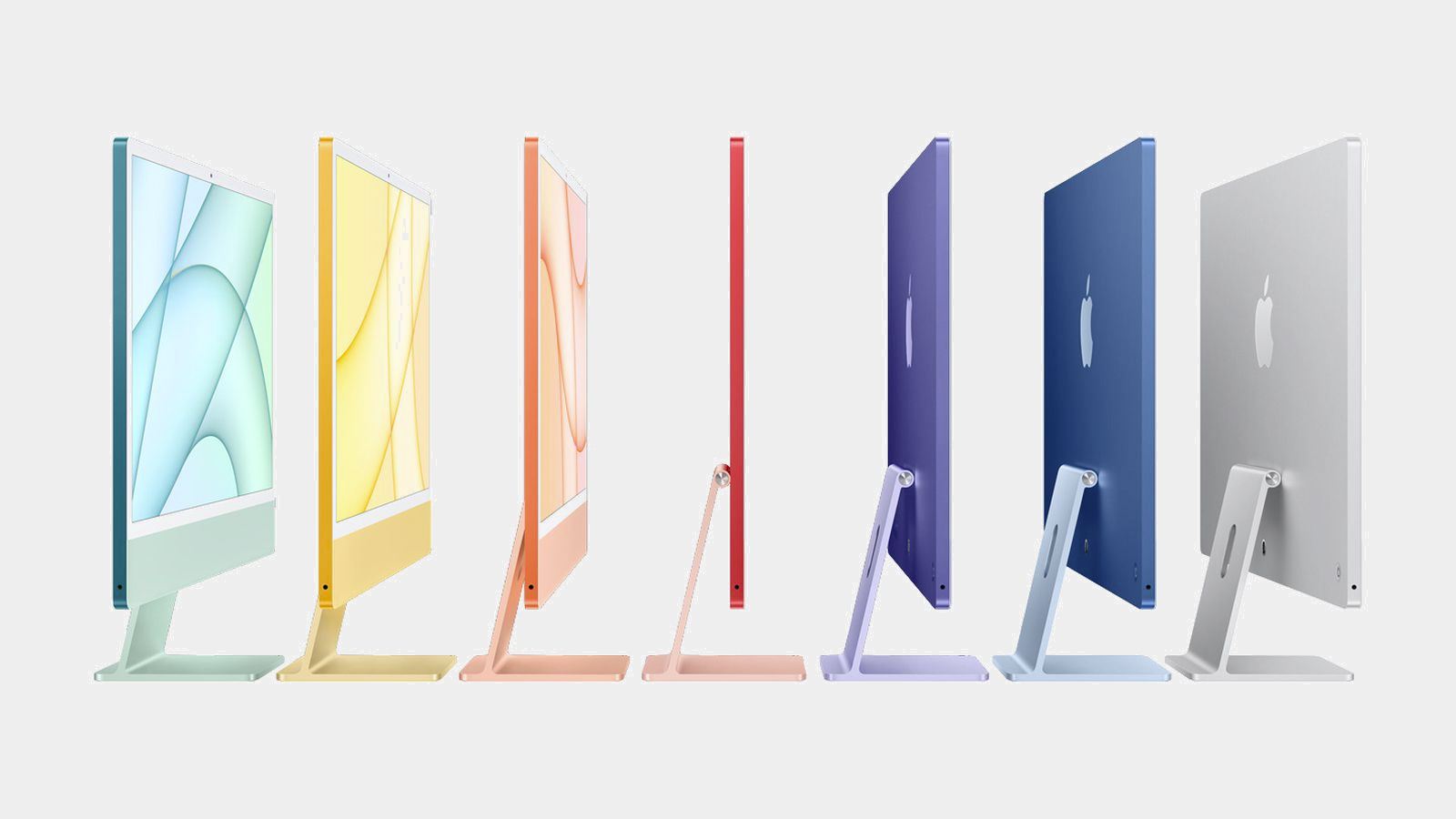![]()
Apple currently offers two external displays, including the
Studio Display and the
Pro Display XDR. It also sells the
24-inch iMac for customers who prefer an all-in-one desktop computer, but the larger 27-inch iMac was discontinued in March 2022.
Below, we recap rumors about next-generation Studio Display and Pro Display XDR models, as well as a potential 32-inch iMac.
Studio Display
Apple released the Studio Display in March 2022 alongside the first Mac Studio. The monitor features a 27-inch LCD screen with 5K resolution, a 60Hz refresh rate, P3 wide color, up to 600 nits brightness, a built-in camera and speakers, one Thunderbolt 3 port, and three USB-C ports. In the U.S., the Studio Display starts at $1,599.
There haven't been any specific rumors about a new Studio Display. However, in December 2022,
Bloomberg's Mark Gurman said Apple was
working on multiple new external monitors. He said at least one of these monitors
could function as a smart home hub in a low-power state, but it's unclear which model he was referring to. In July 2023, Gurman said Apple's next-generation monitors would launch in 2024 at the very earliest.
There have been
on-again, off-again rumors about Apple planning a new 27-inch external display with mini-LED backlighting and ProMotion support, which could allow for up to a 120Hz refresh rate, but the status of this project is not entirely clear. In April 2023, Apple supply chain analyst Ming-Chi Kuo said the display was
slated for mass production in 2024 or early 2025. It's unclear if this monitor would be the next Studio Display.
Pro Display XDR
Released in December 2019 alongside an updated Mac Pro, the high-end Pro Display XDR features a 32-inch screen with LED backlighting, a 6K resolution, a 60Hz refresh rate, P3 wide color, up to 1,600 nits of brightness, one Thunderbolt 3 port, and three USB-C ports. In the U.S., the monitor starts at $4,999, but the optional Pro Stand costs $999 extra.
Gurman said one of the new external monitors that Apple was working on was an
updated version of the Pro Display XDR with an Apple silicon chip, something the current model lacks. In the Studio Display, an A13 Bionic chip powers features such as Center Stage camera framing, spatial audio, and Siri voice commands.
While no other features have been rumored yet, some additions that customers are hoping for include a webcam, speakers, and a higher refresh rate.
32-Inch iMac
In October 2023, both Gurman and Apple supply chain analyst Ming-Chi Kuo said Apple was
developing a 32-inch iMac for
release in late 2024 or in 2025. Kuo said the larger iMac's screen would feature mini-LED backlighting.
In November 2023, Apple announced that it has
no plans to release a 27-inch iMac with an Apple silicon chip. For customers who want a large-screened desktop setup, Apple recommended pairing the Studio Display with a Mac Studio or Mac mini. Apple did not explicitly rule out the possibility of a 32-inch iMac being released in the future.
Apple updated the 24-inch iMac
with its latest M3 chip last year.
Article Link:
What to Expect From Apple's Next Studio Display and Pro Display XDR






